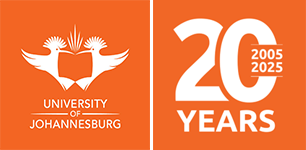UJ IR (Institutional Repository)
About UJ IR
Research output, Theses & Dissertations
UJ IR is the University of Johannesburg’s Open Access Institutional Repository. The IR collects and maintains intellectual scholarship such as published journal articles (pre-print and post-print), conference papers and proceedings, data sets, reports, theses and dissertations in a free and open environment.
Search UJ IR: UJ IR collections & communities
Submit thesis or dissertation:
ETD Submission Guidelines
ETD Submission Form
ETD Frequently Asked Questions
Submit Research output on OROSS: Submit research articles
About UJ DR (Data Repository)
UJ DR is the University of Johannesburg’s Open Access Data Repository. Our data repository collects Research data/Raw data/Datasets, which are data in whatever formats or form collected, observed, generated, created and obtained during the entire course of a research project.
Search UJ DR: UJ Research Data
Submit thesis or dissertation:
RDM Submission Guidelines
RDM Submission Quick Guide
Data Repository Frequently Asked Questions
UJ Open Access mandate
In 2010, the Senate approved the University of Johannesburg Open Access Mandate which calls for all accredited research output to be archived in the Institutional Repository, UJ IR
In 2011, the University signed the Berlin Declaration on Open Access to Knowledge in the Sciences and Humanities, and the Budapest Open Access Initiative.
How does Open Access (OA) benefit researchers?
- Increased visibility, usage and impact for their work;
- Research papers are available in a short span of time and researchers’ online presence and research profile improve;
- Avoid duplication of research topics and encourage liason between researchers.
How does the University of Johannesburg benefit from OA?
- Increased impact for research;
- The open access collection in the repository forms a complete record of the research output of the institution;
- Serves as a benchmark to measure and assess research trends and programmes;
- Provides a return on the investment of funding received from government, research foundations and the tax-paying public.
